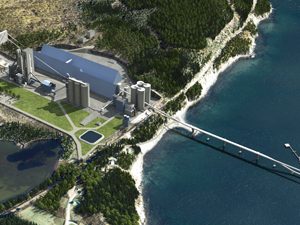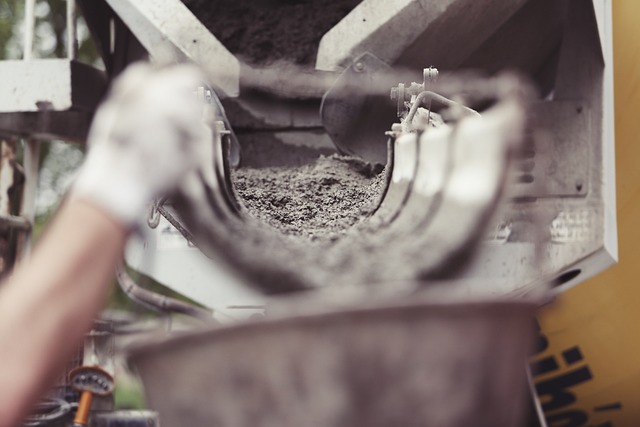 McInnis Cement announced that the financial structure of its new generation cement plant under construction in Port-Daniel-Gascons, Quebec, has been completed. National Bank of Canada has confirmed the availability of a $360 million loan for the project. The announcement caps financing for the operation, led by a $500 million commitment from private and public investors, and $250 million commercial loan from province agency Investissement Québec.
McInnis Cement announced that the financial structure of its new generation cement plant under construction in Port-Daniel-Gascons, Quebec, has been completed. National Bank of Canada has confirmed the availability of a $360 million loan for the project. The announcement caps financing for the operation, led by a $500 million commitment from private and public investors, and $250 million commercial loan from province agency Investissement Québec.
“We are pleased that the project can be realized without any subsidy; we are also very proud to be able to complete, more than 30 years after it was imagined by local entrepreneurs, this visionary, ambitious and modern cement plant at the cutting edge of technology,” stated Christian Gagnon, CEO of McInnis Cement. “Construction has begun and the project is well under way. Moreover, the ecological footprint of this flagship project for the cement industry in Canada and across the world will be one of the lowest in the industry.”
The Port-Daniel cement plant will use up to 40 percent less fuel per ton of cement than traditional cement plants (due to higher use of hydroelectric power) reducing emissions of greenhouse gas. It will be equipped with all the latest technology for improved environmental performance, including the latest generation bag filters throughout the plant for improved efficiency. The plant will also utilize maritime transportation for fuel, further reducing greenhouse gas emissions associated with the project.
Additionally, the facility will comply with the U.S. standards set out in the National Emission Standards for Hazardous Air Pollutants (NESHAP 2015), which are more stringent than those presently applied in Quebec. The Port-Daniel cement plant will be the only one in Canada to comply with the NESHAP 2015 standards.
The project will use petroleum coke as fuel, an oil refinery residue with a high heating value. The cement plant represents one of the more ecological ways of putting this residue to good use. Its kilns that operate at very high temperatures enable its usage while reducing atmospheric emissions through a succession of high performing filtration stages of the combustion gases.
“Over the coming years, we intend to reduce even further the greenhouse gas emissions (GHG) by partly replacing the petroleum coke with biomass, available in the Gaspé region. This partial conversion to biomass is at the very heart of the concept of this new cement plant,” added Gagnon.
McInnis Cement has released, on a voluntary basis, the documents related to the environmental assessment of the Port-Daniel cement plant project, although the project is not subject to the BAPE process. The documents have been available on the McInnis Cement website since November 2013. Moreover, the monitoring committee of the project has been active since March 2013 and an information office has been opened in Port-Daniel since June 2013 to answer questions of citizens and workers wishing to learn more about the project.
“We have received at our offices people who are proud to see this major project move forward, as well as workers pleased to be part of the construction of a project that will have a significant economic impact for years to come, and that will provide quality jobs to the Gaspé region. The Port-Daniel cement plant will favorably position Quebec on the North American export market and strengthen its competitiveness in the cement industry. For years, we haven’t seen such a unique project of its type and size in all of eastern North America. We are determined to make the Port-Daniel cement plant a sustainable and profitable project for all Quebeckers ,” concluded Gagnon.




